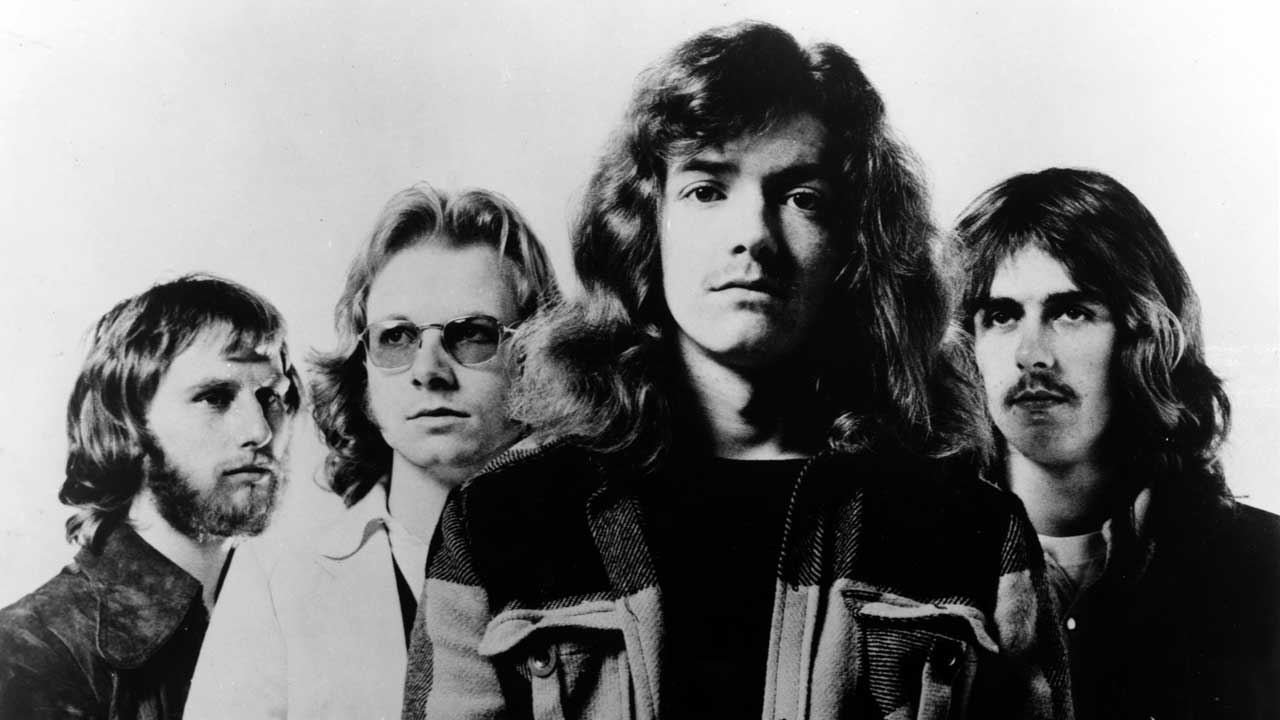With more than 120 different releases listed on Amazon, Wishbone Ash’s back catalogue is both extensive and convoluted – forbiddingly so to newcomers. Given its richness and diversity, that’s a real shame. As progenitors of a twin-guitar style that paved the way for the likes of Thin Lizzy and Iron Maiden, the band have created some of the most undervalued rock music of the last four decades.
Formed in the sleepy seaside town of Torquay by bassist Martin Turner and drummer Steve Upton, the pair relocated to London in 1969 and teamed up with guitarists Andy Powell and Ted Turner (no relation) via a Melody Maker ad. Their mystical blend of rock and folk came into sharp focus on their third album, Argus, which beat Deep Purple’s Machine Head and David Bowie’s Ziggy Stardust to be voted Album Of 1972 by the readers of both Sounds and Melody Maker.
Wishbone Ash Mark 1 came screeching to a halt in 1974 when Ted Turner abruptly quit both the band, and the entire music business; the guitarist subsequently travelled to South America, bought a donkey and headed off in search of the lost city Of Mu in Peru. His replacement, Laurie Wisefield, ushered in the Mk 2 line-up, and with it a more wide-ranging approach that found them setting their sights on the US to the point where they would decamp to Connecticut in 1975.
There were more serious ructions to come when Martin Turner left the band following 1980’s turbulent Just Testing, leaving Andy Powell as the sole original member and kicking off a series of line-up changes that continue to this day. The bassist rejoined the band twice – from 1987-91 and again in 1995-96 – although he would resurface with his own alternative line-up in 2004, to Powell’s chagrin. As Martin Turner’s Wishbone Ash, they even re-recorded Argus, effectively putting paid to a much hoped-for reunion to mark Ash’s 40th anniversary in 2009.
While everything here dates from that glorious decade between 1970 and 1980, both Turner and Powell continue to celebrate the band's legacy. Andy Powell’s Wishbone Ash released Coat Of Arms in 2020, while Martin Turner’s version of the band – now playing under the name Martin Turner (Ex Wishbone Ash) after a court ruling – will head out on the road next month to celebrate the 50th anniversary of the classic Argus.
In 2018, both parties collaborated on The Vintage Years 1970-1991, a mammoth, limited edition 30CD box set that contained all the Wishbone Ash you could ever need, and much more besides.

And one to avoid...
You can trust Louder Our experienced team has worked for some of the biggest brands in music. From testing headphones to reviewing albums, our experts aim to create reviews you can trust. Find out more about how we review.











